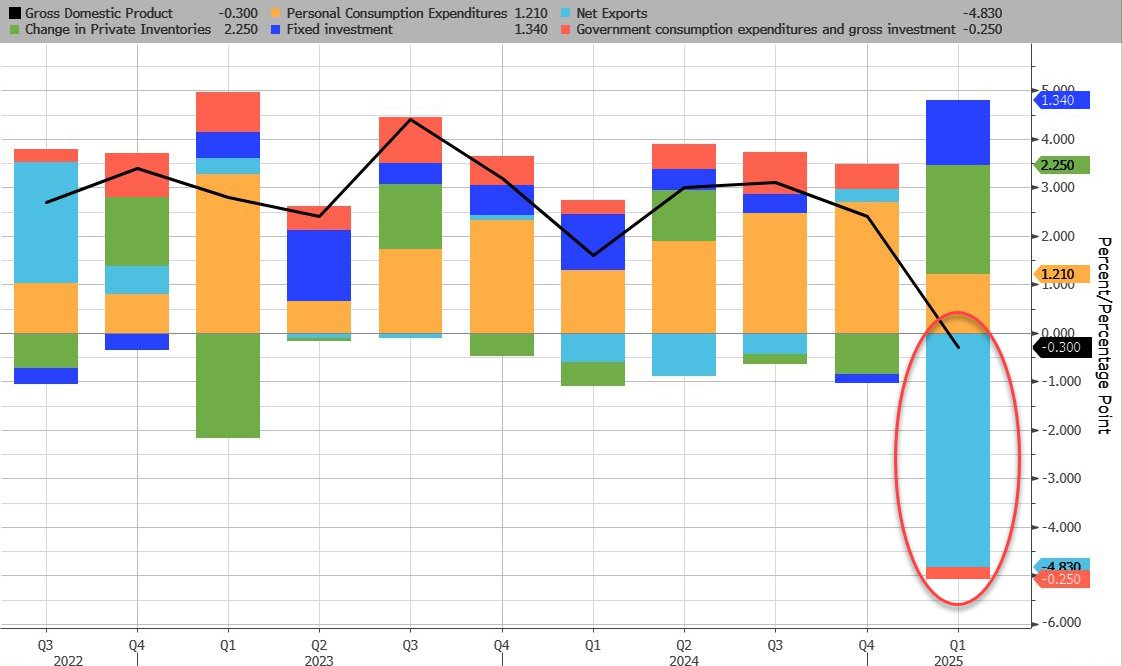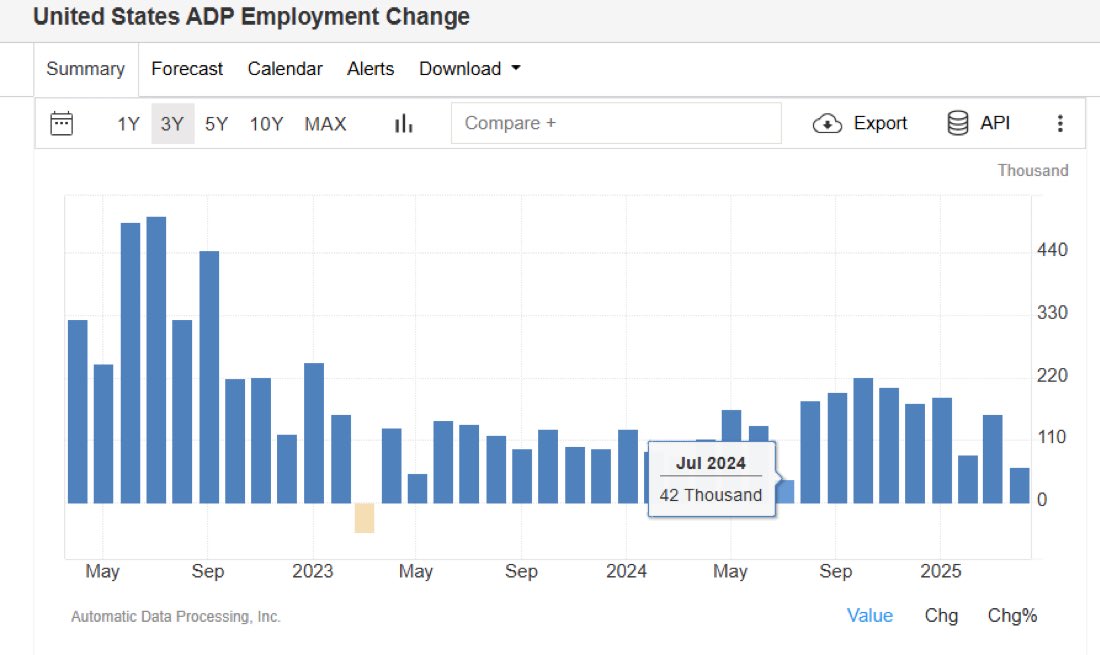UnitedHealth tests AI system to streamline medical claims processing - Bloomberg
The headlines below lead some to believe the shelves in our stores will soon be empty. Moreover, reminiscent of 2020, an inflation spike due to fractured supply lines is imminent. Let’s provide context to help make sense of the headlines and determine whether the plunge of Chinese inbound container ships to US ports represents truth or easy narratives.
- China Freight Ship Traffic To Busiest US Ports Sees Steep Drop – CNBC
- Chief economist warns of collapse after free fall in container traffic to the US -Shipping Watch.
- Traffic At The Port of Los Angeles Set To Plunge- LA Times
- Plunging LA Port Volumes Spell Trouble For Truckers- FreightWaves
As shown below, the plunge in traffic of recently departed container ships from Chinese ports is startling. However, it only reverses the surge to US ports in the month prior. As previously noted, companies were stockpiling goods to avoid tariffs. Thus, with inventories higher than usual, importers’ needs fell in April, resulting in fewer inbound container ships.
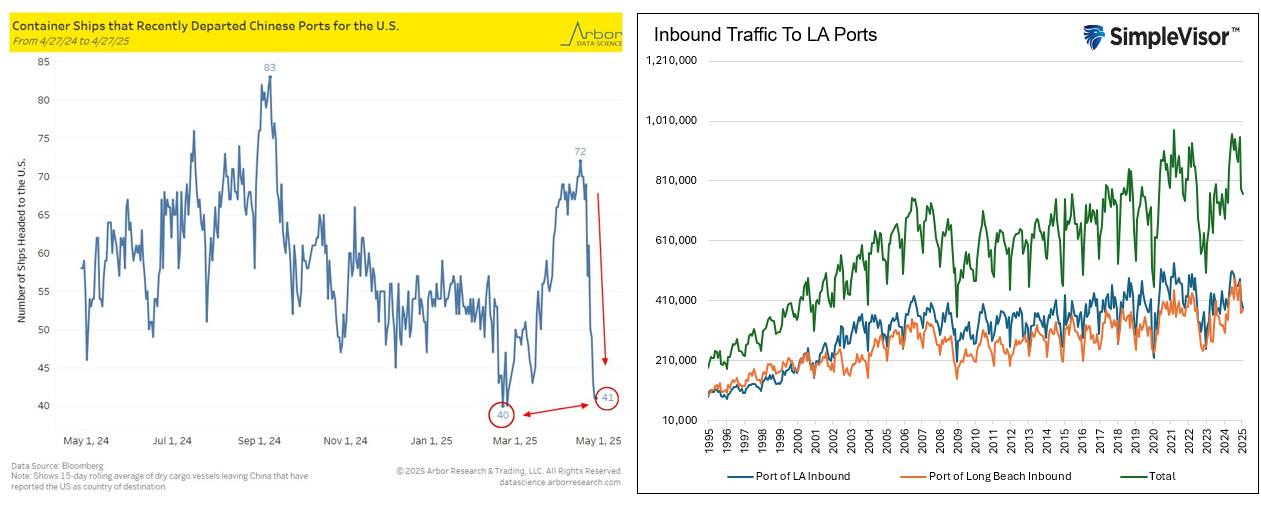
The graph on the right shows the two largest California ports where China’s goods typically enter. The recent decline at these ports is no different from so many others in the last 30 years.
Further, even if there is a prolonged slump in goods from China, we must recognize that China ships goods from other countries’ ports, like Vietnam, to avoid scrutiny. Thus, total inbound ship traffic is a more critical gauge than ships from Chinese ports.
Even if the supply of goods is curtailed, the inflationary pressure will not rival that of 2021/22. The prior inflation was partly due to diminished supplies, but equally important was the massive stimulus that drove demand. Today, demand is weakening, so half of the inflation recipe is missing.
What To Watch Today
Earnings
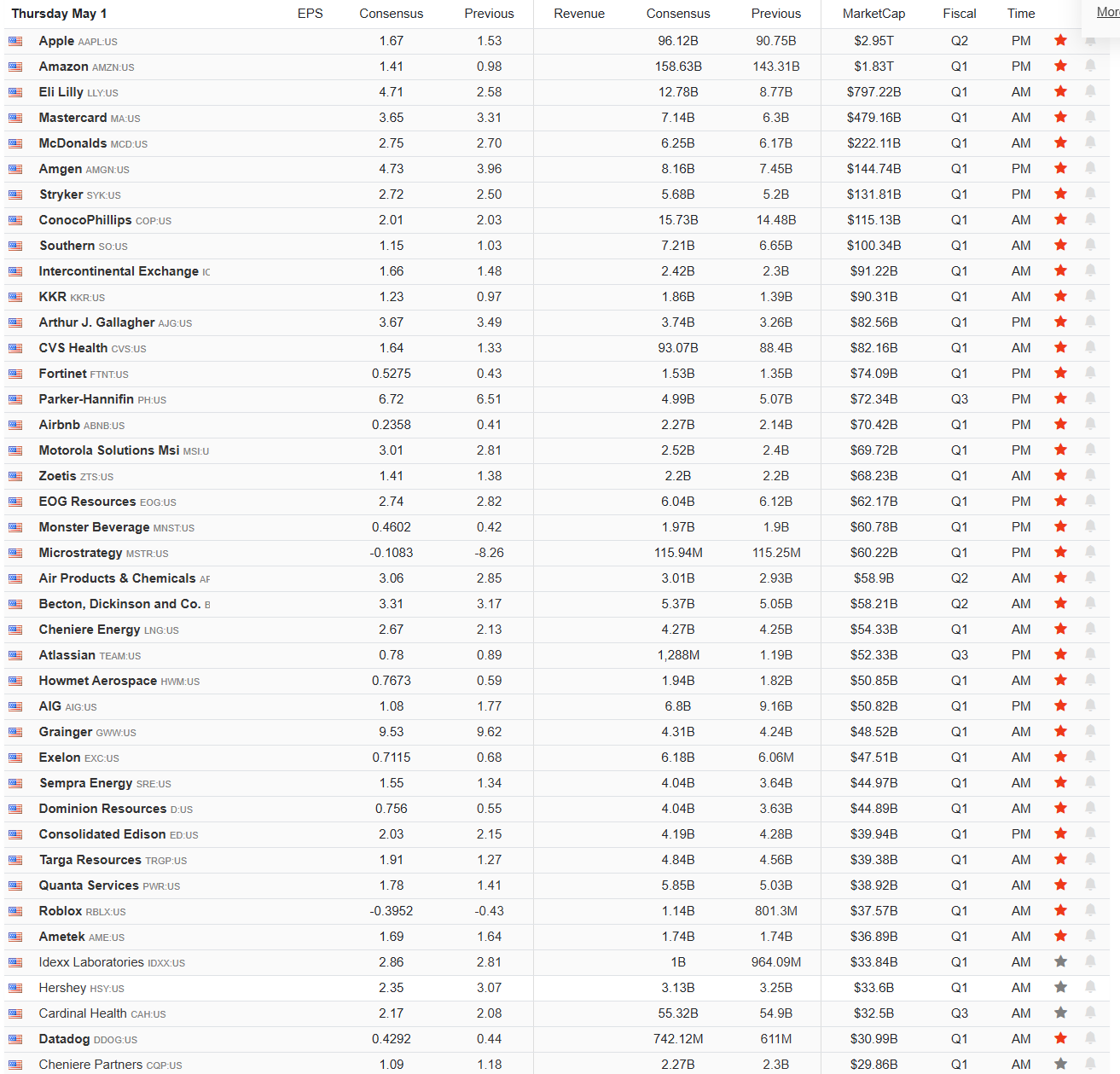
Economy

Market Trading Update
Yesterday, we noted that the market had reversed its post-tariff announcement losses. We suggested remaining risk-averse in the near term as the technical damage from the recent decline had yet to be repaired. With the recent 6-day advance in the market, a long stretch, a pullback was likely, particularly as markets approached the 50-DMA. As we have noted recently, many “trapped longs” are looking for an exit, and yesterday those sellers appeared.
One thing we are watching very closely now is oil prices, which remain under pressure. Oil prices are back to pre-pandemic highs, and the risk is a break into the low 50s. The problem with oil is that the President wants to “drill-baby-drill,” which will increase supply amid weakening economic demand. Such will result in lower prices, and push-back from oil producers who won’t drill low-profitability wells.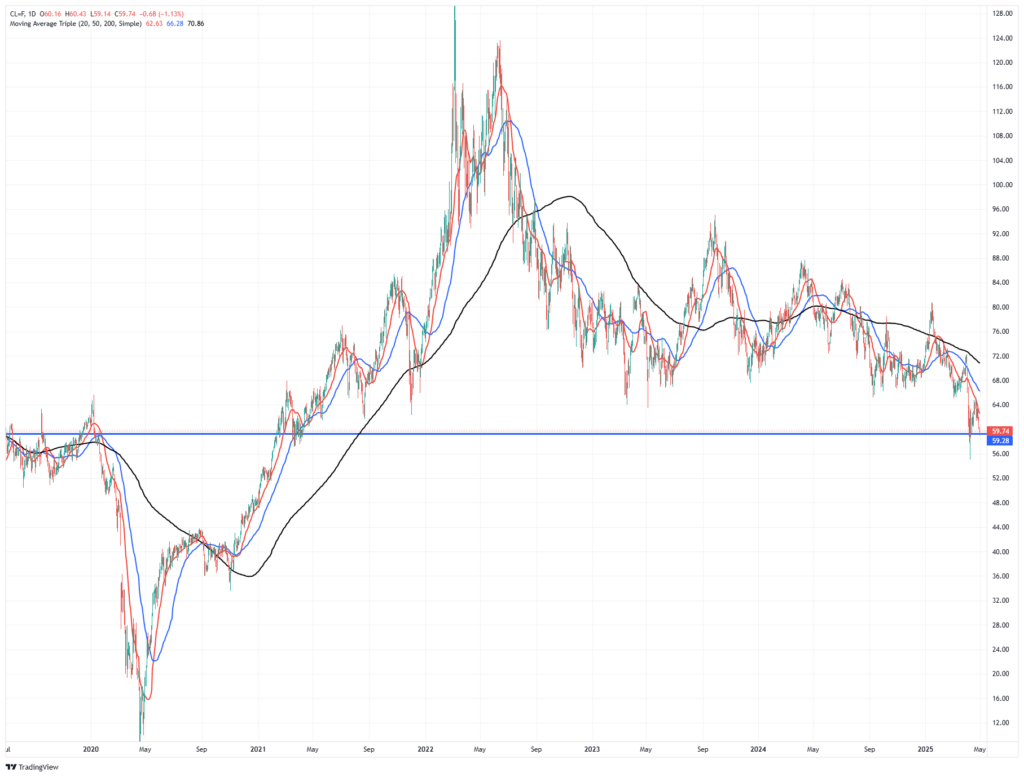
However, the decline in oil prices, a significant economic input, was already confirming the slowdown in economic activity we saw in yesterday’s GDP report.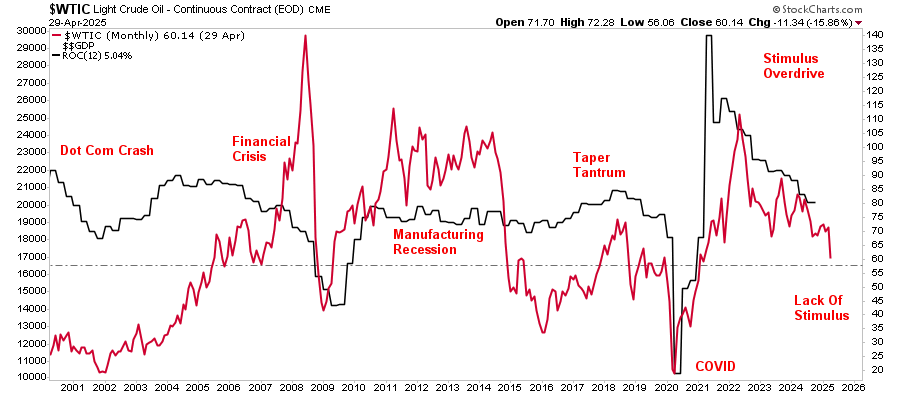
Oil prices also confirmed the decline in inflation as shown in yesterday’s PCE report.
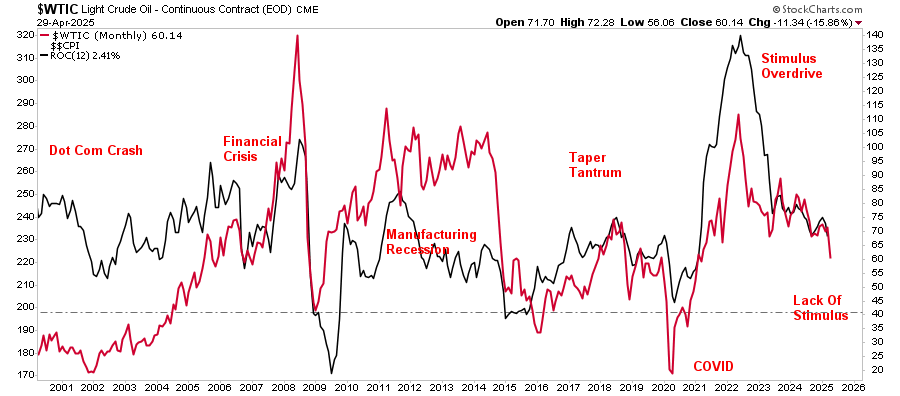
We continue to watch crude oil for its economic inputs. However, from a purely technical perspective, oil currently has downside to the mid-50s. At those levels, oil will be oversold enough for a decent technical bounce, likely occurring this summer as we move into hurricane season.
However, much of that outlook depends on both the supply/demand imbalance in the economy and the dollar. Given that oil trades in dollars, a recovery in the dollar will provide support for oil prices. Our larger concern remains the economic demand component. If that remains sluggish, oil prices could be range-bound in the 50s for quite some time.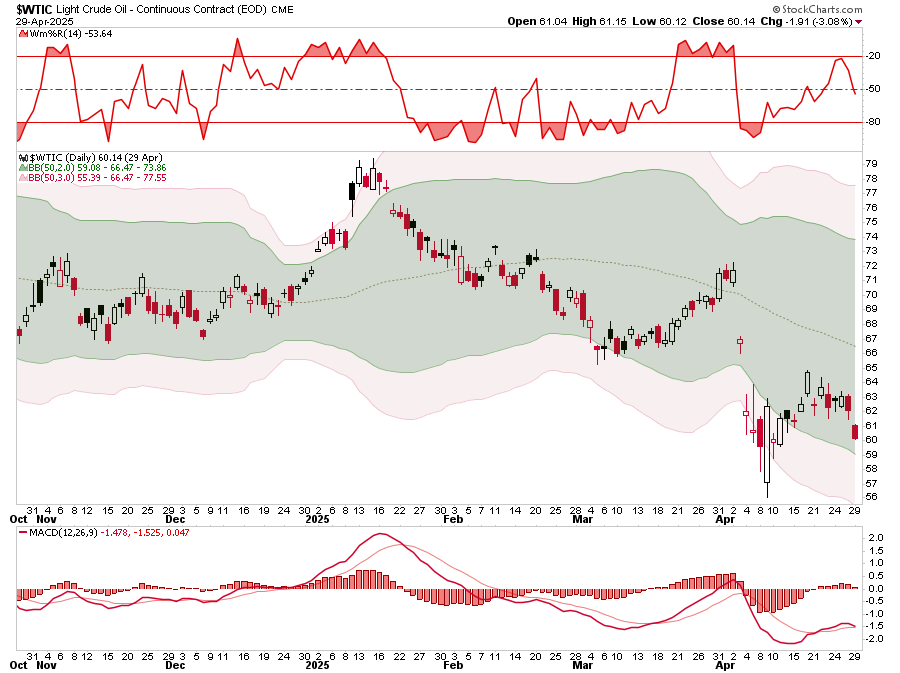
We will continue to monitor and make portfolio adjustments accordingly.
GDP, PCE Prices, And ADP
The first quarter GDP fell 0.3% compared to a wide range of estimates. The Wall Street consensus was +0.3%, but the Atlanta Fed GDPNow was -2.8%. While the negative reading is troublesome, the details are not. As shown below, courtesy of Zerohedge, foreign trade subtracted 4.83%.
As we note in the opening, this was a function of tariff front running. However, the significant positive contribution from private inventories is also a function of stockpiling. If we subtract those two inputs, GDP would have risen by 2.3%, on par with recent growth.
The ADP jobs report, a precursor for tomorrow’s BLS labor report, showed a 62k job gain, well below Wall Street estimates of 135k. The second graph shows that the trend has continually slowed since September. ADP only includes private sector workers, thus the BLS report may also be weak.
Monthly and core PCE prices were 0.0%, 0.1% below expectations. However, last month’s figures were revised higher by 0.1%. The year-over-year rate is now 2.3% down from 2.5%, nearing the Fed’s 2% target. The Fed will likely look through this month’s PCE data and focus more on the next few months, which will be impacted by tariffs.